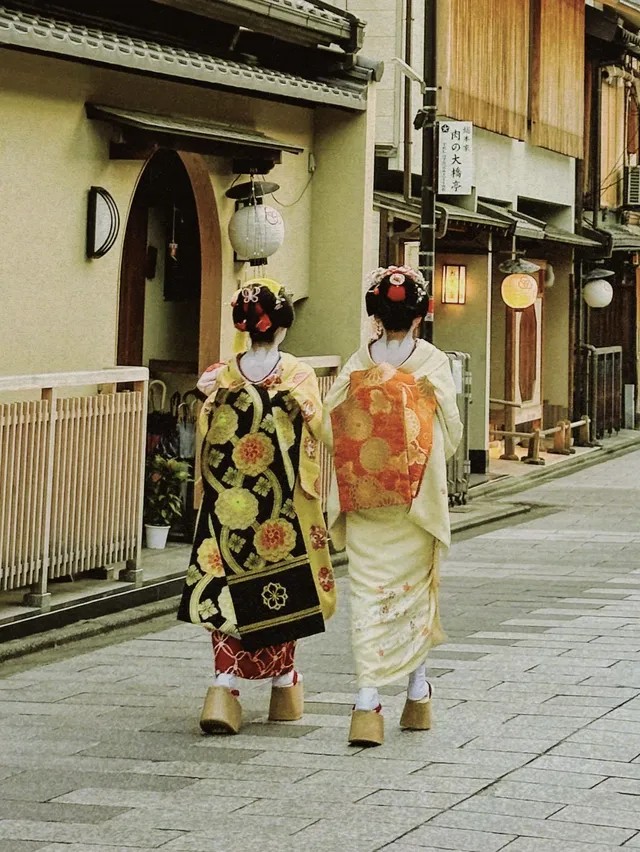Where Geisha, Temples, and Teahouses Create an Unforgettable Cultural Journey

🌟 What is Gion & Higashiyama?
Gion and Higashiyama are Kyoto’s most picturesque and historic districts, where traditional wooden townhouses, stone-paved lanes, and ancient temples bring Japan’s old-world charm to life.
Located on the eastern side of Kyoto, this area is best known for geisha culture, tea ceremonies, historic temples, and seasonal beauty — especially during cherry blossom and autumn foliage seasons.
It’s the perfect place to slow down, walk, and feel the spirit of Kyoto’s cultural heritage.
🔍 Why Visit Gion & Higashiyama?
👘 Geisha & Maiko Sightings – Spot traditionally dressed entertainers in the early evening
⛩️ Yasaka Shrine – Gion’s spiritual heart with vibrant lanterns and festivals
🏯 Kiyomizu-dera Temple – Iconic cliffside temple with sweeping city views
🪵 Preserved Streets – Walk along Ninenzaka & Sannenzaka’s charming slopes
🍵 Tea Houses & Kaiseki Dining – Authentic Kyoto cuisine and cultural experiences
🖌️ Traditional Crafts & Souvenirs – Fans, pottery, washi paper, and more
📷 Photogenic Scenery – Perfect for cultural photos, especially at sunset
🗂️ Key Spots to Explore
| Place | Highlights |
|---|---|
| Hanamikoji Street | Gion’s main street, lined with tea houses & wooden machiya |
| Yasaka Shrine | Open 24 hours, known for its lantern-lit grounds at night |
| Kiyomizu-dera Temple | UNESCO World Heritage site with a wooden stage over a valley |
| Ninenzaka & Sannenzaka | Historic shopping streets leading up to Kiyomizu-dera |
| Maruyama Park | Sakura hotspot and a peaceful retreat near the shrine |
| Kodai-ji Temple | Beautiful Zen garden, bamboo grove, and seasonal illuminations |
🎟️ Admission & Hours
🆓 General Area: Free to explore
💴 Temples & Shrines: Entry fees range from ¥300–¥600 per temple
🕒 Opening Hours: Most temples open around 9:00 AM – 5:00 PM
🗓️ Open daily (some temples may close on specific days)
🚨 Visitor Tips
👣 Wear comfortable shoes – many stone steps and hills
📸 Respect photography rules, especially regarding geisha and private property
🎐 Mornings and evenings are less crowded and more atmospheric
🌸 Visit in spring (March–April) or autumn (November) for seasonal beauty
🎎 Avoid loud talking in quiet alleys — it’s a residential area too
🚉 Access
- Gion-Shijo Station (Keihan Line) – Closest to Hanamikoji and Yasaka Shrine
- Kawaramachi Station (Hankyu Line) – 10-minute walk to Gion area
- Kiyomizu-Gojo Station – For easier access to Kiyomizu-dera
🚌 Kyoto City Bus is also available from Kyoto Station to Kiyomizu-michi stop
🍱 Nearby Food Options
- Gion Karyo
🍱 Elegant kaiseki cuisine in a traditional townhouse
📍 Hanamikoji Street - Omen Kodaiji
🍜 Hand-pulled udon with Kyoto-style side dishes
📍 Near Kodai-ji Temple - Gion Kinana (Dessert Café)
🍨 Artisan Japanese ice cream with mochi & matcha
📍 Side alley off Shijo-dori
🔁 Sample Plan: “Cultural Walk Through Gion & Higashiyama”
🕐 10:00 AM – 4:30 PM
🌸 Start at Yasaka Shrine for morning prayers
🚶 Stroll through Hanamikoji Street and peek at tea houses
🛍️ Walk up Ninenzaka & Sannenzaka for snacks and shopping
🏯 Visit Kiyomizu-dera and enjoy the city view
🍵 Take a break with traditional sweets or tea
🌆 Catch the sunset at Maruyama Park or near the shrine lanterns
📍 Area & Contact
Area
Gion & Higashiyama District, Higashiyama-ku, Kyoto, Japan
Phone
📞 Varies by location – check individual temples or shops
Tourist Info Site
https://www.kyokanko.or.jp/en/ (Kyoto City Tourism Association)
✨ Gion & Higashiyama invite you into the soul of Kyoto — where tradition, elegance, and nature blend into unforgettable memories.